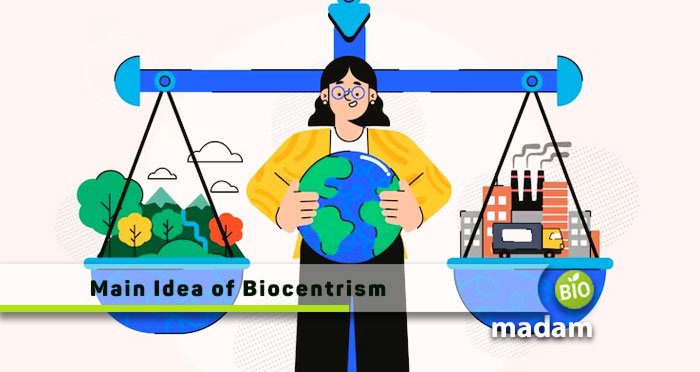Over hundreds and thousands of years, scientists have believed physics to be the fundamental science of the universe. However, Lanza’s theory of biocentrism states otherwise. He mentions that biology is the fundamental science shaping the universe, and nothing would have existed if it wasn’t for living beings. The theory has baffled scientists, splitting them into different groups. Some agree with the main ideas of biocentrism, while others do not. This article covers everything about the biocentrism theory and its supporting and contrary arguments.
What is Biocentrism?
Biocentrism is a theory explaining the center of the universe, like ecocentrism and anthropocentrism. The environmental ethicist Holmes Rolston III coined the term “Biocentrism” in the 1970s. Later, Robert Lanza mentioned biocentrism in his biocentrism book “Understanding the Universe’s True Nature Through Life and Consciousness.”
Robert Lanza’s theory of biocentrism mentions that the universe exists to support life, not the other way around. So, if life did not exist, there would have been no universe. Thus, it takes the focus away from the physical components of the universe, shifting it to life.
Lanza says living organisms are above the non-living components of the environment, but no organism is superior to the other. Thus, unlike anthropocentrism, humans are not more important than other living organisms in biocentrism.
Biocentrism mainly focuses on environmental and moral ethics. It examines the relationship between humans and their environment to find the right way humans should interact with the environment.
Main Ideas of Biocentrism
Humans are Not Superior
The main idea of biocentrism, relating to the widely accepted anthropocentrism, is that humans are not superior. The theory of biocentrism says that all living organisms are equal and humans must not exploit other organisms for their benefit.
Consciousness Forms the Universe
Another claim biocentrism debunks is that life was created after the universe. Instead, Lanza mentions that our thinking and consciousness create the universe. He states our thoughts shape the universe.
Life is Infinite
There is a unique concept of Biocentrism and death. This theory states that life is not linear; instead, it is an infinite cycle that does not end with death. Lanza explains life as a continuous cycle between evolution, birth, death, and rebirth.
Organisms are Interconnected
Another important element of the ideas behind biocentrism proposed by Lanza is the interconnection between all organisms. Opposed to other theories, biocentrism does not say that organisms are independent of each other. It mentions that every organism impacts the presence and existence of another, making them interconnected.
The Ethics of Respect for Nature in Biocentrism
Paul W. Taylor explains the ethics of respect for nature in his essay, an argument favoring biocentrism. Considering biocentrism vs anthropocentrism, Taylor mentions that the system of ethics around us must produce all life in nature, not only humans. Thus, humans must not let their selfish desires come in the way of moral decisions about the environment.
The four main biocentric elements of Taylor’s Ethics of Respect for nature include:
- Humans have the same membership on the same terms as non-living members.
- Earth’s ecosystem is a complex web of interconnected elements.
- Every organism is a teleological center of life, uniquely working toward its own good.
- Humans are not superior to other species, and we must reject this idea of superiority.
Now that you know what is biocentrism theory and its main ideas, let’s discuss its components.

Components of Biocentrism
Animal Rights
Biocentric approaches focus on animal rights as much as human rights. Followers of biocentrism deny practices against animal rights, such as animal testing.
Vegetarianism
As biocentrism emphasizes equal treatment to all living organisms, it encourages vegetarianism and veganism. People who believe in biocentrism adopt these approaches to avoid harm to other organisms for human interests.
Anti-Deforestation
Biocentrism protects not only animal rights but also opposes deforestation. This element is common in biocentrism and anthropocentrism. However, the reasons for opposing deforestation differ in both.
Reducing Paper Use
Reducing paper use is also a part of the anti-deforestation approach and biocentrism. Decreasing paper usage reduces the number of trees cut to meet global paper demands.
Anti-Fur Trade
Biocentrism also indirectly opposes the fur trade, as fur comes from animals. Obtaining and using leather falls in the same category considering animal rights.
Bio-Products
Opting for bio-products that do not harm the environment is also a component of biocentrism that contributes to a healthy environment for all living organisms.
Biocentric Rules of Interacting with Other Organisms
Biocentric moral standing and environmental ethics emphasize four basic rules for humans to follow when interacting with other living organisms.
Non-Maleficence
Non-maleficence refers to avoiding harm to other living organisms directly or indirectly. Focusing on the components of biocentrism can help practice non-maleficence.
Non-Interference
Humans should not interfere with another living being’s growth or existence. They must not restrict, redirect, or speed up an organism’s pursuit of its goals.
Fidelity
Humans must be sincere to other parts of the ecosystem and not use other living organisms to satisfy their interests. Biocentrism votes against the exploitation and manipulation of other living things.
Restitutive Justice
Humans must follow the action of restitutive justice to restore moral and ethical balance when they intentionally or unintentionally harm other organisms.
Arguments Against Biocentrism
As the main ideas of biocentrism shift the focus from physics to biology, biocentrism indirectly points towards rewriting the laws of physics. However, Lanza does not have any tested results or evidence to prove his theory. Thus, it is insufficient to rewrite the laws of physics based on extensive experimentation. The inability to test or prove biocentrism and its claims favoring consciousness and equality among organisms makes it a weak proposal.

Biocentrism vs Naturalism vs Ecocentrism
One should not confuse biocentrism with ecocentrism or naturalism! However, besides being separate, the ecosystem in biocentrism plays a major role in understanding the proposed theory. Biocentrism focuses more on equality among all living organisms. Meanwhile, ecocentrism believes that all components of the ecosystem are equally important and contribute to the sustenance of the environment.
Besides biocentrism and ecocentrism, some people also believe in naturalism which says nothing exists beyond the natural world. It mentions a realistic approach that rejects idealized experiences explained in biocentrism.
The Bottom Line
Biocentrism theory states that all organisms are equal, and none is superior to the other. Robert Lanza claims humans are not superior to other organisms, living organisms are interconnected, life is infinite, and consciousness shapes the universe. At the same time, Paul W. Taylor also mentions that every organism is a teleological center of life, working towards its own good uniquely. Thus, the main ideas of biocentrism emphasize equality among organisms and protecting animals and humans. Despite Lanza’s claims, one of the main problems with biocentrism is that it does not support any proof or evidence, resulting in Biocentrism debunking.

Jeannie has achieved her Master’s degree in science and technology and is further pursuing a Ph.D. She desires to provide you the validated knowledge about science, technology, and the environment through writing articles.

